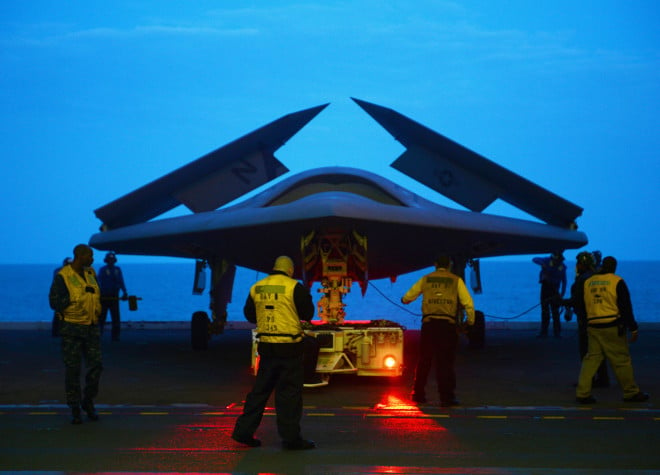
The U.S. Navy is realigning its carrier-based unmanned aircraft programs under one office at Naval Air Systems Command (NAVAIR), USNI News has learned.
On Thursday, NAVAIR held a change of command ceremony for PMA-268, the office that manages Northrop Grumman’s X-47B Unmanned Combat Air System Demonstrator (UCAS-D) program.
PMA-268 program manager Capt. Jamie Engdahl, who has led the UCAS-D effort for the past several years, handed over command to Capt. Beau Daurte.
But along with the leadership change, the Navy also realigned the management of its entire carrier-based unmanned aircraft portfolio.
PMA-268 has been merged with NAVAIR’s Advanced Development Program Office (ADPO), which manages the Unmanned Carrier Launched Airborne Surveillance and Strike (UCLASS) effort.
The new office — which has been dubbed Unmanned Carrier Aviation — will fall under the auspices of Rear Adm. Mat Winter, the program executive officer (PEO) for Unmanned Aviation and Strike Weapons.
Under the new command structure, Duarte will lead both the UCAS-D effort and the UCLASS program. Meanwhile, former UCLASS program manager Charlie Nava will serve as Duarte’s civilian deputy.
According to several industry sources, the most significant aspect of the change is that lessons learned for the UCAS-D demonstration effort will be more easily transferred to the UCLASS program—which is slated to yield the Navy’s first carrier-based operational fixed-wing unmanned aerial vehicle (UAV).
That means that industry teams that have not directly participated in the UCAS-D program will be able to take advantage of the experience gained during the X-47B’s carrier and shore-based trials. Potential beneficiaries of the change include Lockheed Martin, General Atomics and Boeing, which are all proposing airframe designs for the UCLASS effort.
Meanwhile, sources both in industry and government say that the requirements for the UCLASS continue to be hotly debated. There are differing opinions on what the Navy should focus on for future growth in terms of many key performance parameters including survivability, aerial refueling, and payloads.
There are serious tensions between those in the Pentagon who want to develop a penetrating unmanned carrier-based strike capability versus those who would prefer to build an aircraft comparable in capability to a modestly stealthy U.S. Air Force Reaper UAV.
The Navy, however, says that the current requirements remain unchanged from a revision made in late 2012.
“The requirements for UCLASS have not changed,” according to a statement from the Office of the Deputy Chief of Naval Operations for Information Dominance (N2/N6) provided to USNI News.





